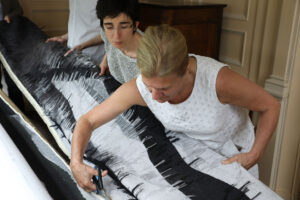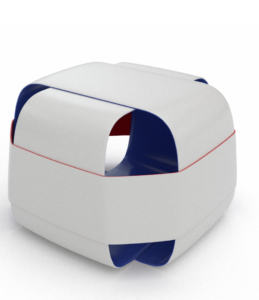Part of the Akari Unfolded collection, a tribute to Isamu Noguchi, made for the Noguchi Museum in New York, Galet lamps from YMER&MALTA studio are the result of unexpected innovation, enriching the world of resin sculpture with a new process.
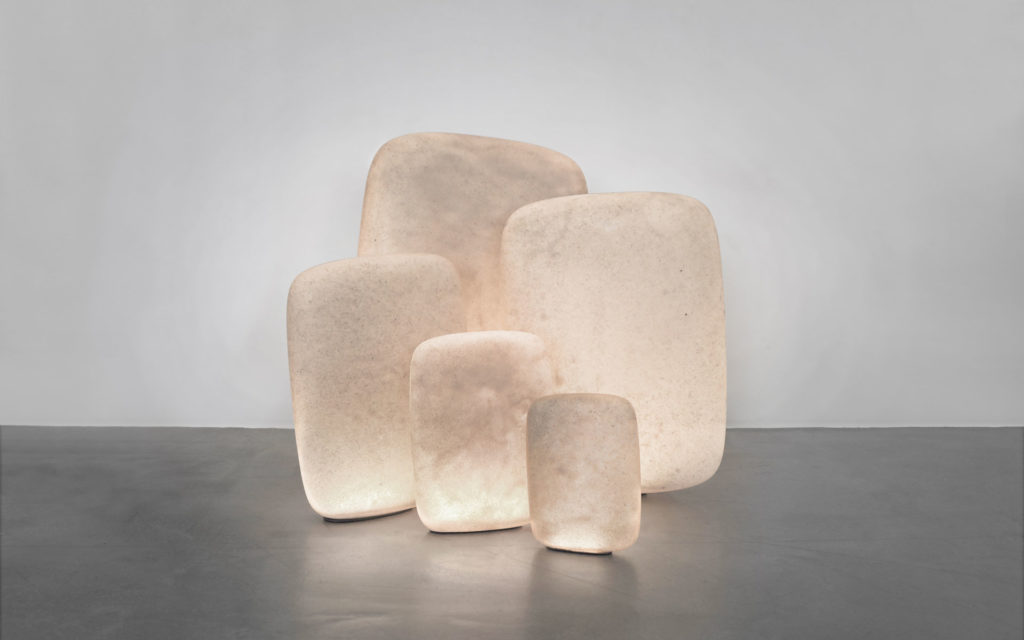
Designed as round and full sculptures, the Galets (French for pebbles) are hollow shaped thanks to an innovative process, mixing together natural sand and modern materials. As for the light that models them, they reach timelessness.
Design and creations
Choosing to domesticate the changeability of natural light, rather than trying to tame it, Isamu Noguchi drew and sculpted shapes able to please light. By humbly offering it surfaces to play on with its nuanced emanations, he became the sensitive interpreter of its harmony. The peaceful Akari paper lamps give off a soft and muted light, the echo of the rocks, and of the soft pebbles of a Japanese garden.
It was while strolling alongside Dakin Hart, in the shadow of the New York garden designed by Noguchi, that Valérie Maltaverne imagined pebbles with golden highlights, YMER&MALTA lamps as a poetic tribute to the Japanese sculptor and creator.
From the sketches made in collaboration with Sylvain Rieu-Piquet, designer, five pebbles found a perfect balance. These modern cairns, shaped as the day goes by, by changing lights, give back a granite heat once the night has fallen.
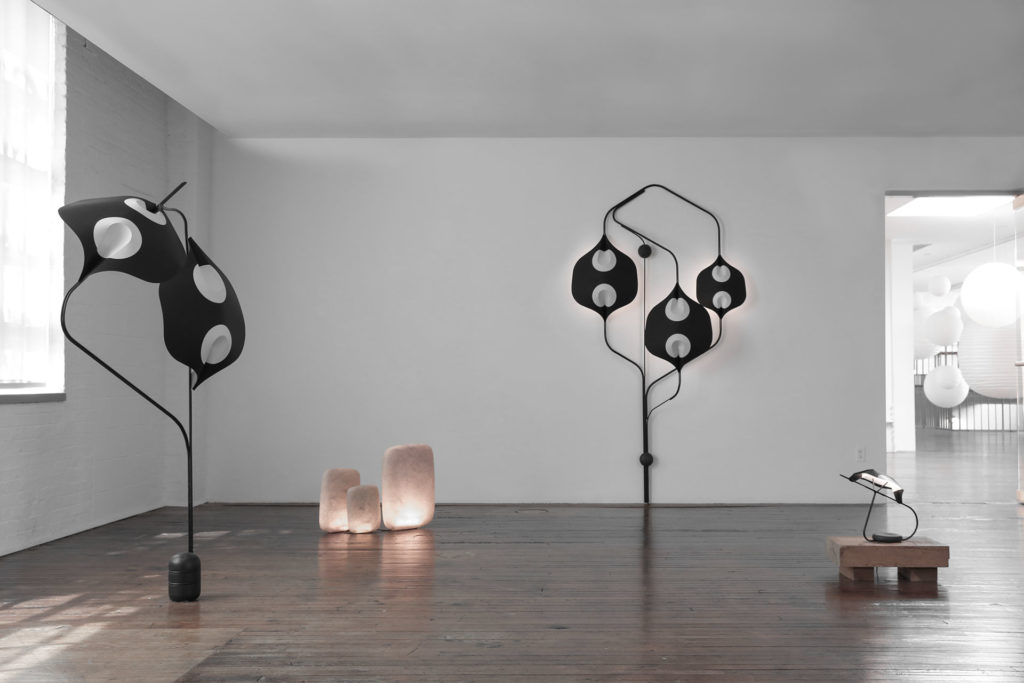
At first, resin mixed with flax is considered to materialise the smooth surface of the pebbles. Yet, sand quickly replaces flax, promising better than any other materials to transform theses lamps into sculptural pieces, imprinted with a strong mineral character.
Once the sketches given to the craftsmen, these laters’ answers were unanimous and quite upsetting: the resin moulding process implies a stratification of the pieces in two distinct parts, which are then sealed together. But, what is important in the pebbles aesthetics is precisely the evocation of a mineral mass, full and smooth, as a perfect emanation, polished by water and time.
To make this ungracious seal disappear, Valérie Maltaverne must herself make the process more innovative. The rotational moulding technique of creating resin pieces enables to mould a piece by spreading matter evenly by a rotative motion. It seems to be the best option to make the Galets. Then, two problems arise. The first one is the base material: epoxy resin is not adapted to rotational moulding. Only liquid resin, very transparent is here adapted and will magnify the sand grains which will be mixed to it to get a mineral grain close to granite.
This choice initiates the second level of complexity of the Galets making: finding a craftsman able to make the material more innovative by adding to it the successive layer of sand, this in a machine that has not yet been created to answer this particular need or this new material.
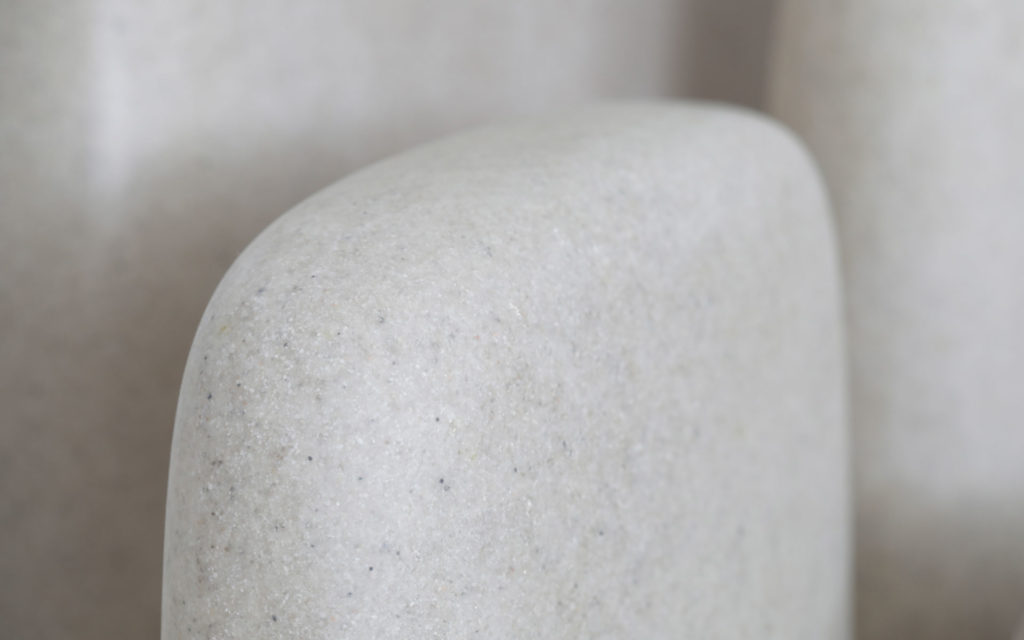
Innovating
YMER&MALTA’s path timely crosses the path of an aeolian engineer who is intrigued by this technological challenge. The studio acquires a rotational moulding machine for him to work on. Encouraged by Valérie Maltaverne, this engineer is going to multiply trials, and persevere until succeeding in finding the precise proportion of liquid resin, sand and glass fibres necessary to each lamp’s realisation. The first small-sized Galets are ready just in time for the Akari Unfolded exhibition at the Noguchi Museum, New York, in 2018. During the previous winter, no medium or large-scaled pieces were successfully realised: all of them broke, and the cause was only to be discovered during the following spring. The rise of temperatures will then be the key to the mystery, solving the production issue of all Galets’ sizes. The mix between liquid resin, sand and glass fibres reveals itself to be intolerant to cold. Only a degree difference is enough to wipe out hours of rotational moulding and impose on the workshop a seasonal rhythm of work.
Strengthened by this discovery, the production of small, medium and large Galets takes advantage of summer, although each piece needs, depending on its size, between 9 and 12 hours of rotational moulding and constant attention. Carefully, layers of resin, than sand must be poured alternately on top of each other, both reinforced with glass fibres to guaranty each lamp’s rigidity. Once a lamp finished, the ridges still have to be sanded to make the surface as polished and soft as a pebble.
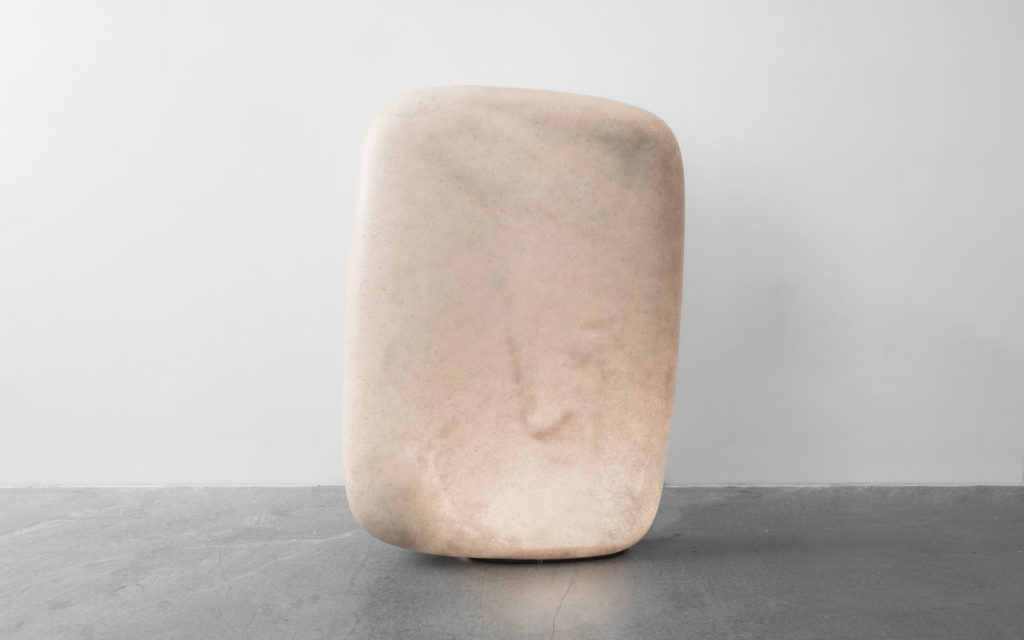
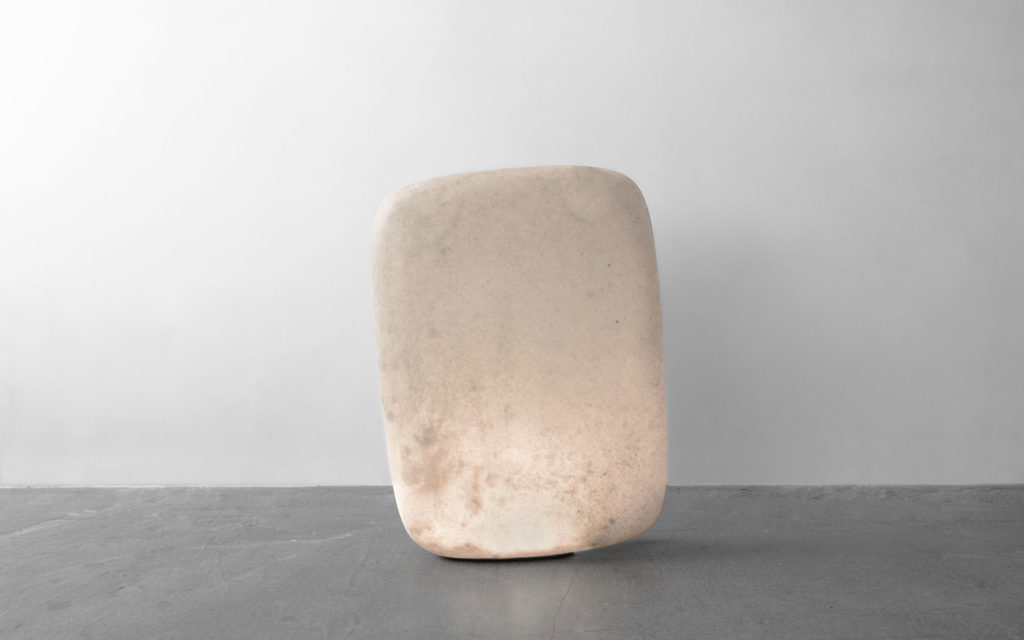
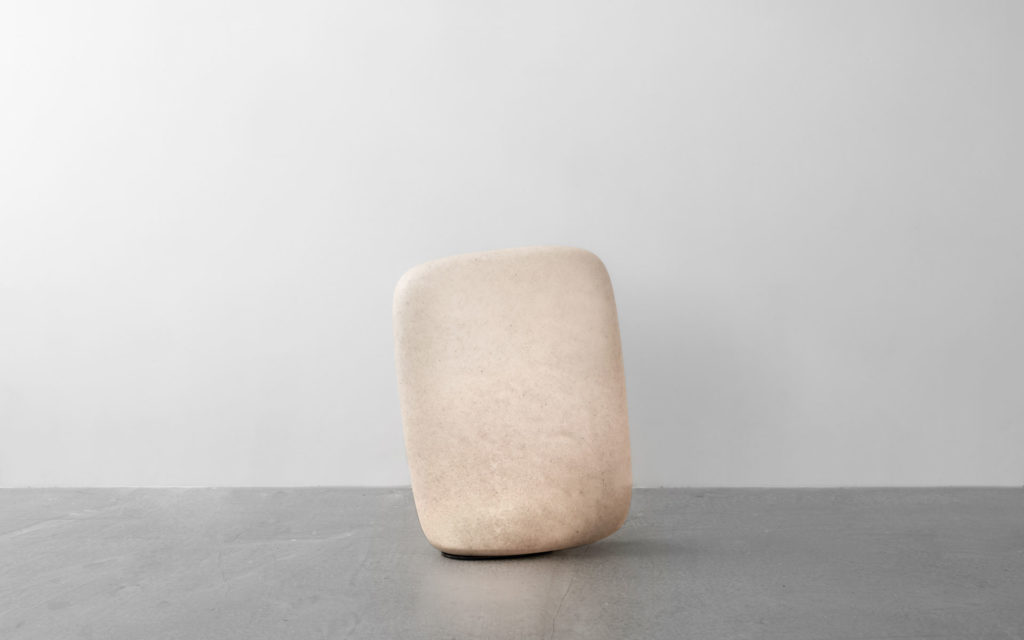
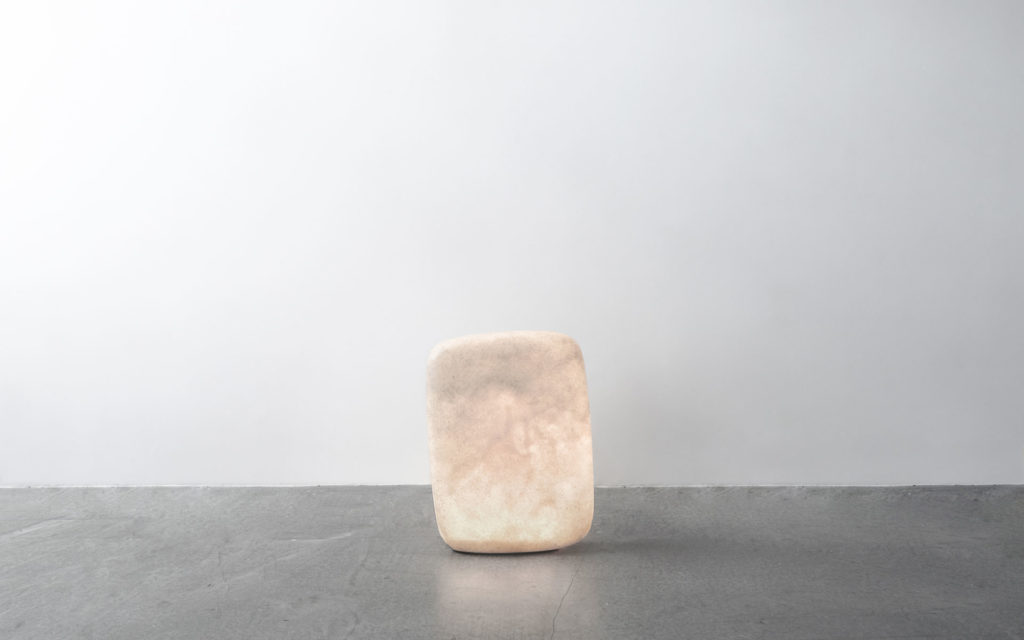
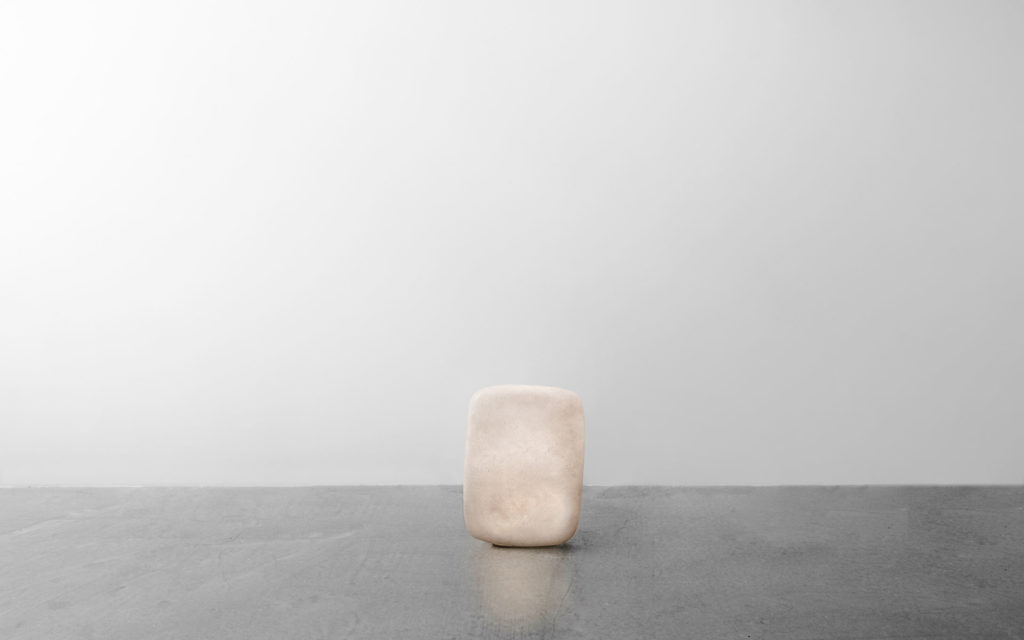
One-of-a-kind sculptural lamps
A little more than a year of research was necessary to create the first lamp. For the first time, a resin item is realised, by combining layering techniques and rotational moulding, to get a hollow volume, without any seal, thanks to a French developed innovation. In the way of the bronze foundries of the 19th and 20th centuries, which made the most famous lost-wax casting pieces with no seal, YMER&MALTA sets from now on this new fabrication process in the tradition of French sculpture.
By mixing sand and transparent liquid resin, matter gains both personality and unity. The continuous motion of rotational moulding patiently brings each sand grain to its place over the long fabrication hours. Each lamps possesses its very own mineral print. For each Galet, a unique leg is realised according to the size of the opening left by the machine, as for the pontil mark on glass. At last, the Galets are delicately hand-sanded and softened with bee wax. To the eye and touch, the lamp appears with the same velvety and matt materiality than pebbles, rolled by the swell. Their mineral character is also embodied by their weight, surprising at first: the Galet lamps are sturdy and heavier than traditional resin items obtained by rotational moulding.
Anchored in the ground as pebbles are in the sand, these lamps are a tribute, full of nuances, to Isamu Noguchi, from his Akari lamps to his New York Japanese garden, where minerals are the sole object of meditative contemplation.

